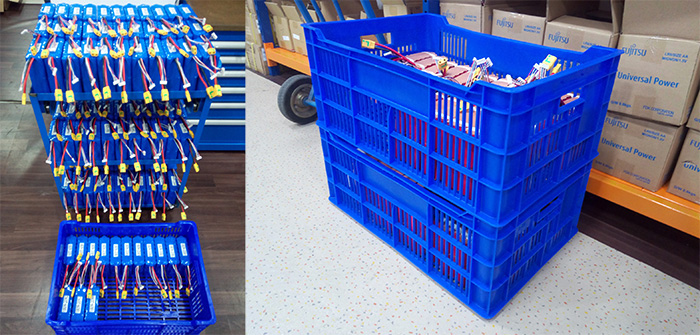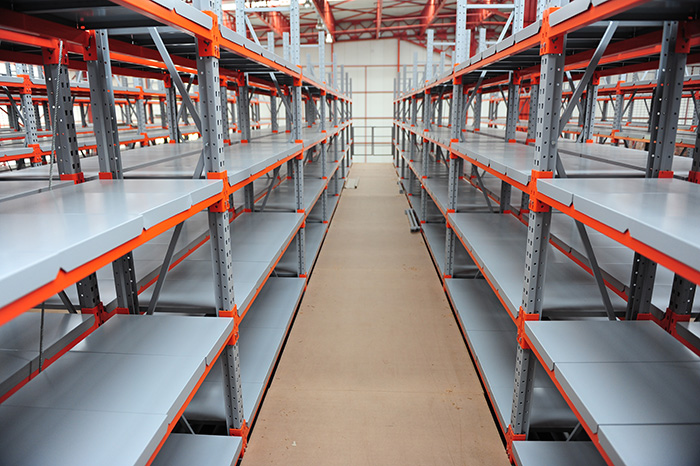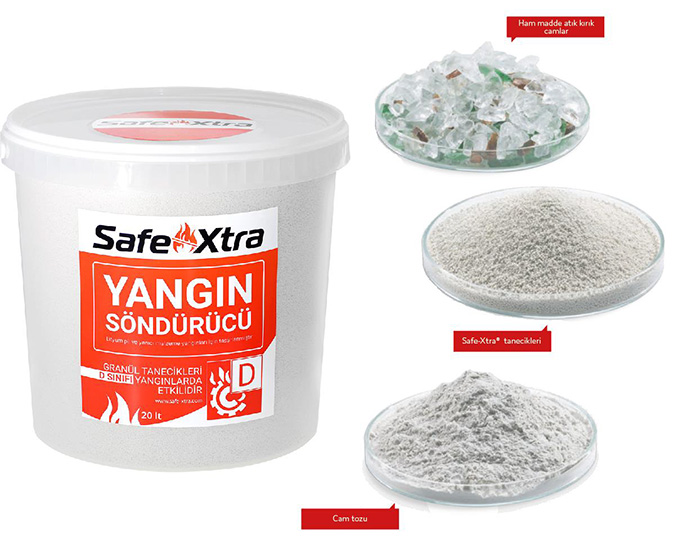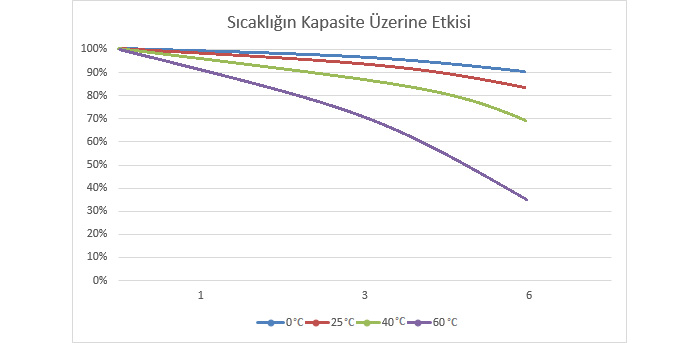Considerations When Storing Lithium-Ion Batteries
Stacking
Li-ion battery products should not be stacked in more than 3 boxes. Frame and shelf systems should be preferred for more stacking.
Batteries should be positioned high from the ground against flooding. For this, pallets can be used or electrically insulated rack systems can be used.
Water and drain pipelines may pose a risk. Air conditioning and heating system lines, which may cause moisture and drip with sweating, should be located away from the storage area.
Chemicals, etc., that will increase the risk of burning in a negative situation that may occur in the battery storage area. There should be no flammable products.
Transport
Regarding the transport of batteries, hard movements should be avoided during loading and unloading. Products must be protected from falling and impacts. The crushing that may occur may cause the internal pressure to increase and the separators to rupture, causing the products to heat up and burn immediately or over time.
Fire Extinguishers
In the case of burning lithium-ion batteries for any reason, they should never be intervened with water. Lithium battery fires should be evaluated in the class of metal fires and the fire should be suffocated with graphite-based powders.
Class A fires: Fires of solid materials such as paper, wood, fabric, and paper.
Class B fires: Fires of flammable and combustible liquids such as fuel oil, solvent, thinner
Class C fires: Flammable and combustible gas fires such as methane propane, LPG
Class D fires: Metal fires such as magnesium, sodium, aluminum
Class E fires: Electrical fires
Fire Extinguisher for Safe-Xtra Batteries and Batteries - 20lt
Additional precautions
Personnel assigned to control the datalogger device, which records the temperature and humidity at certain time intervals for the battery storage section, can prevent negative consequences that may occur.
Effect of temperature on battery life
As the temperature increases, the battery capacity decreases with time. Therefore, the heater, etc., may cause the battery temperature to increase. vehicles should be located as far as possible from the area where the batteries are stored. It should also be stored out of direct sunlight.
Effect of charge rate on battery life
The charge rate of the stored batteries and the time-dependent decline in the battery capacity is as seen in the graph. The least loss occurs at 40 occupancies. (3.6V-3.8V)







